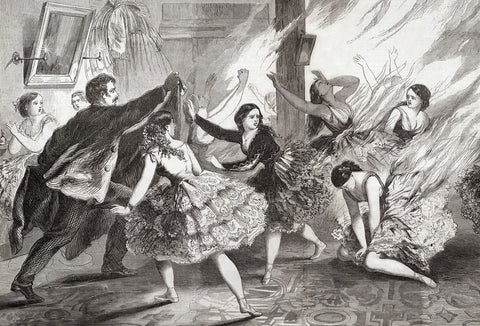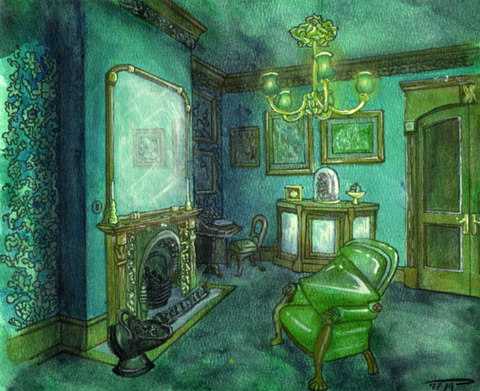Ballet has never been a profession for the faint of heart. The ballerina's grace and delicacy is only achievable by enormous power: endless practice of precision movements, the strength to make acrobatic leaps seem easy, the ability to ignore pain. (Pointe shoes are often ruined not by overuse but by bloodied toes.)
And yet, being a ballerina in the 1800s was not just difficult but incredibly dangerous. Because, more frequently than you can even imagine...
ballerinas would burst into flames on stage.

Edgar Degas, The Prima Ballerina (1876)
The Gaslights
“In 1862, at a dress rehearsal for an opera, dancing superstar Emma Livry wore a costume that evoked the ethereality of the ideal feminine ballerina. It had a corset bodice and a fluffy skirt that ended around her calves. But before her entrance, her skirts got too close to a gaslight and her costume caught fire. Instead of an angelic beauty floating across the stage, Livry became a hellish nightmare cloaked in flames. She ran around the stage in a column of fire before a fireman was able to put it out. Livry survived that night and lived another eight grueling months in recovery, only to die of blood poisoning related to the burns.”
The 19th-century ballet is full of these stories. Sometimes, it wasn’t just one dancer; a burning ballerina could ignite others’ dresses as well. Entire companies of ballerinas perished.
Why were they so close to flames? Because most theatres were lit by gaslight at the time, and because of the necessary placement of the lighting, dancers performed every night dangerously close to the flames that could consume them.
The Fabrics
The costumes for classical ballet have remained remarkably similar over the centuries; Degas’ ballerinas could be warming up in a modern studio. For women, they are dreamy and graceful: tulle tutus that seem to float, silks and satins that flow, layers of fabric that, in the light, create the illusion of being lit from within. The aesthetic of the ballet is dreamlike and otherworldly. And yet these fabrics’ movement and open weave made them incredibly dangerous on stage.

Emma Livry in La Papillon (The Butterfly), 1860
And it wasn’t just ballerinas who burst into flames at the slightest spark: any fashionable woman was at risk. The fashion at the time was for flowy, diaphanous open-weave fabrics that were highly flammable but created this same balletic, angelic aesthetic for women - in contrast with the smelly, dirty, dusty day-to-day environment of the factories and mines during the Industrial Revolution. At the same time, those same factories mass-produced these fabrics, so they were accessible to working-class and middle-class women as well as the nobility.
The result? In 1860, at least 3000 women died by fire when their dresses caught aflame.
The bitter irony is that anti-flammability treatments for fabric did exist at the time. However, they affected the aesthetic: fabric treated in this way was more stiff and less pristine-looking than the billowy white of untreated clothing. And so, under enormous social and economic pressure, women continued to risk their lives for beauty.
The Prevention
For ballerinas, the danger of dancing passed with the conversion to electric lighting in most theatres. Edison’s electric bulb was invented in 1879, and by the late 1800s, major theatres had converted their stages to electric bulbs; the Paris Opera, for instance, converted theirs in 1887. Ballerinas are no longer risking fiery death every time they set foot onstage.
And for ordinary women, the further development of anti-flammability technology and synthetic fabrics, along with the wholesale conversion to electricity in most households for both lighting and cooking, means that daily life is no longer a death trap - when it comes to fire, anyhow.
But when you see a ballerina dancing, don’t forget the enormous strength it takes to be so graceful - and the courage of the many dancers who died for their art.
If you're fascinated by deadly performances that kill all those who perform them - or who view them - try HASTUR, the crown jewel of our Mysterious Package Company offerings.



